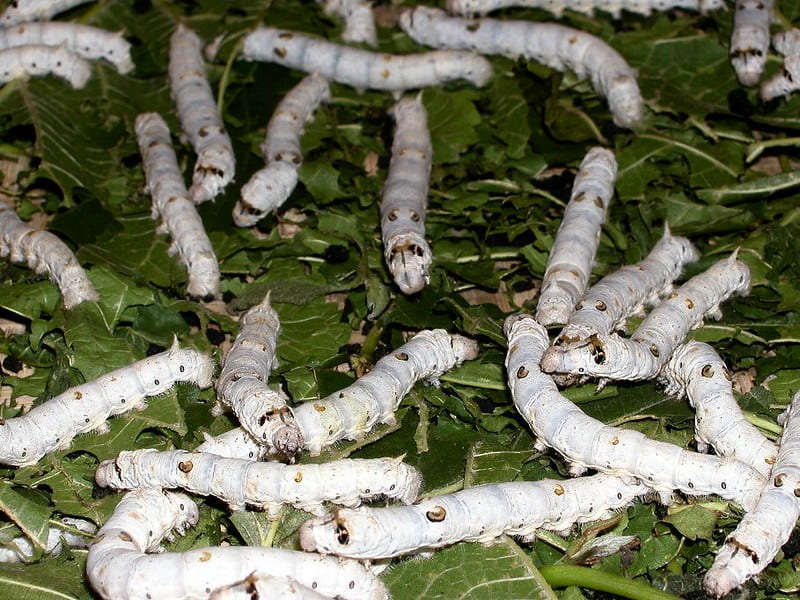In the 1980s, cultural entomology was recognised as a distinct field within entomology. It was formally defined by Charles L. Hogue in 1986 as “the branch of investigation that addresses the influence of insects in literature, languages, music, the arts, interpretive history, religion, and recreation”. Believe it or not, insects have played significant roles in human societies and moulding human civilisations. Throughout human history, insects have been anthropomorphised into relatable objects, and have played various roles in both oral and written traditions, such as folk tales, religious writings, and the arts (Hogue C. L., 1987; Hogue J. N., 2009). This section presents some examples of the role of insects in cultural traditions, religious symbols and writings, and in cinematic films (see Absolem the caterpillar in Alice in Wonderland below).
The cultivation of silkworms to produce silk, also known as sericulture, has developed independently in various human societies, such as in China, India and Japan. In India, the production of wild silk from silkworm is fuelled by both cultural traditions and ritualistic significance, and contributes significantly to the country’s economic growth. The Japanese oak silk moth, Antheraea yamamai, is cultivated in few places in Japan, and produces silk items, such as cloths for Buddhist altars, obis (belts) and family crests in frames (Peigler, 1993).

One famous symbolic example is the deified scarab beetle of ancient Egypt, which served as a symbol of the Egyptian sun god, Khepera. These scarab beetles are in fact dung beetles that rolled balls of dung on the ground, and thus perceived by ancient Egyptians as moving the sun across the sky. Dung beetles became revered as a symbol of rebirth, and scarab figures were incorporated into ancient mummy sarcophagi, amulets, pendants, and other decorative elements (Hogue J. N., 2009).

Insects have been associated with divine interventions (Cherry, 2015), and are portrayed in both positive and negative connotations in religious writings. For instance, the Bible has at least 90 references to insects, with the most famous example being The Plagues of Egypt (Exodus 7:14 to 12:36). Within the ten plagues, three of them involved insects: gnats (third plague), flies (fourth plague), and locusts (eight plague). Few Bible references also showed honourable characteristics of insects, such as the following:
“Go to the ant, O sluggard; consider her ways, and be wise. Without having any chief, officer, or ruler, she prepares her bread in summer and gathers her food in harvest.” Proverbs 6:6-8 (English Standard Version)

In films, insects have been well-established in science fiction, horror, and comedy genres. The depiction of insects in science fiction and horror films often trigger entomophobic tendencies of most people, where insects are portrayed as scary, deadly and alien-like monsters (Hogue J. N., 2009; J & Berenbaum, 1988). Notable examples include Mimic (1997) and The Mist (2007), and also the disgusting combination of human and fly bodies in The Fly (1986). In comedy and family-friendly animated films, insects are instead humanised and relatable (Hogue J. N., 2009). Modern examples include A Bug’s Life (1998; see video below), Antz (1998), and Bee Movie (2007).